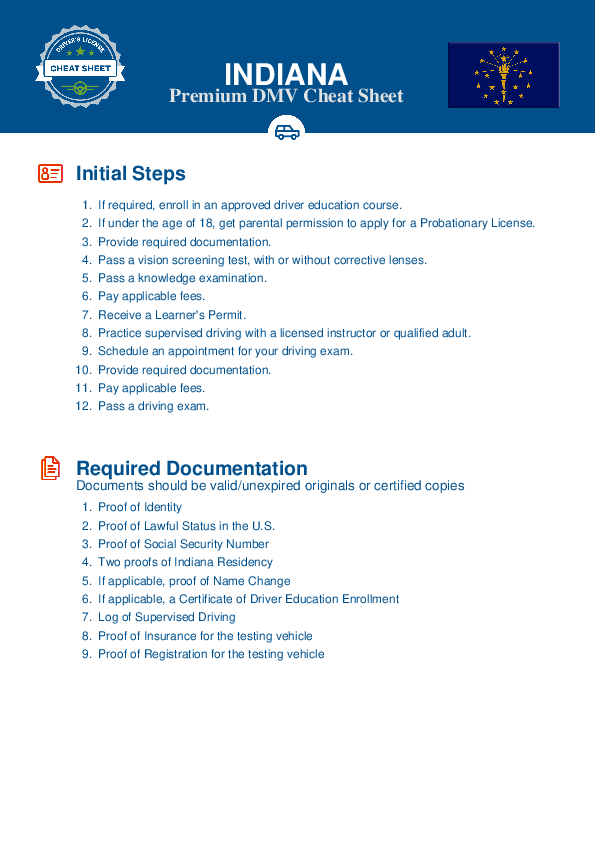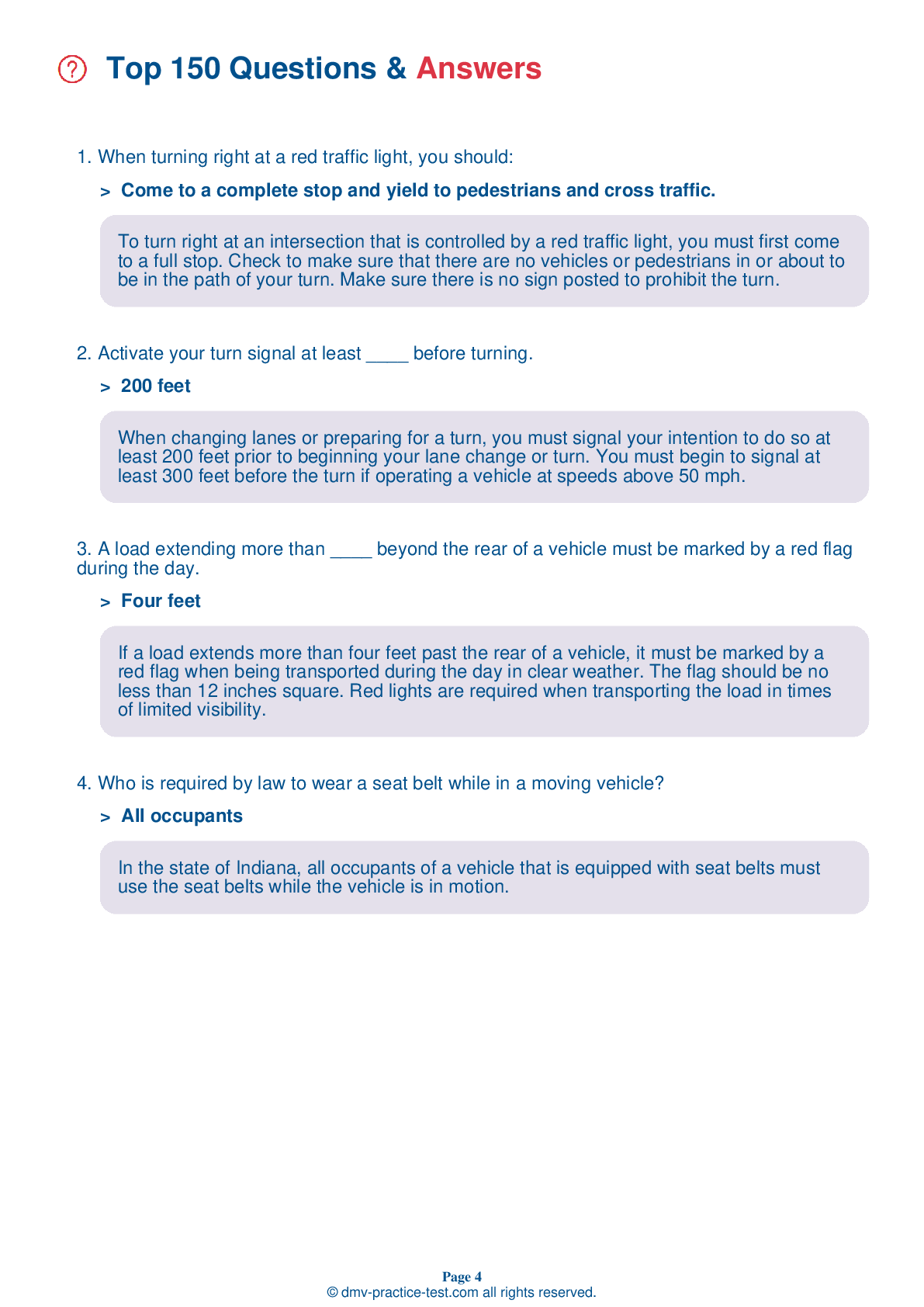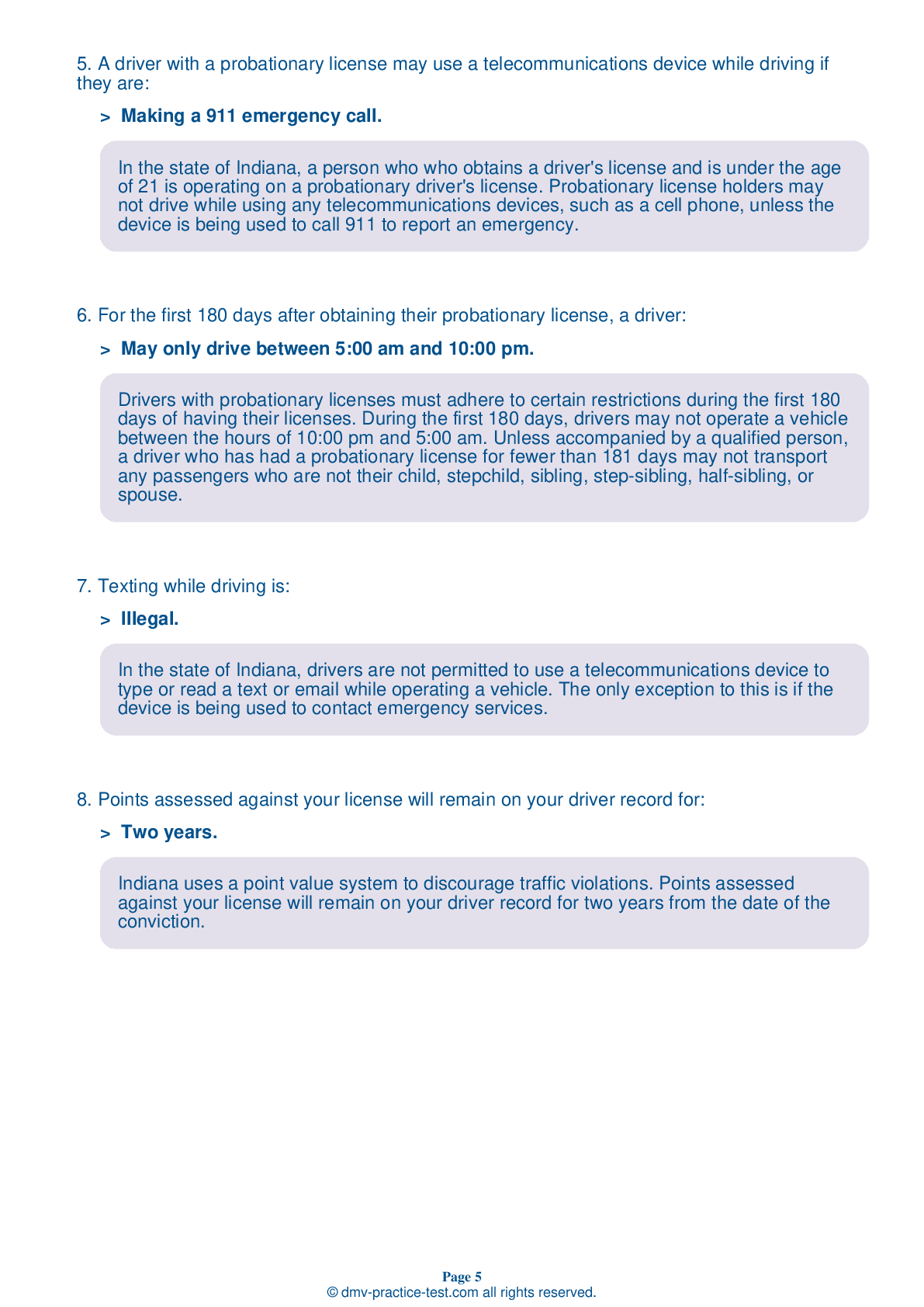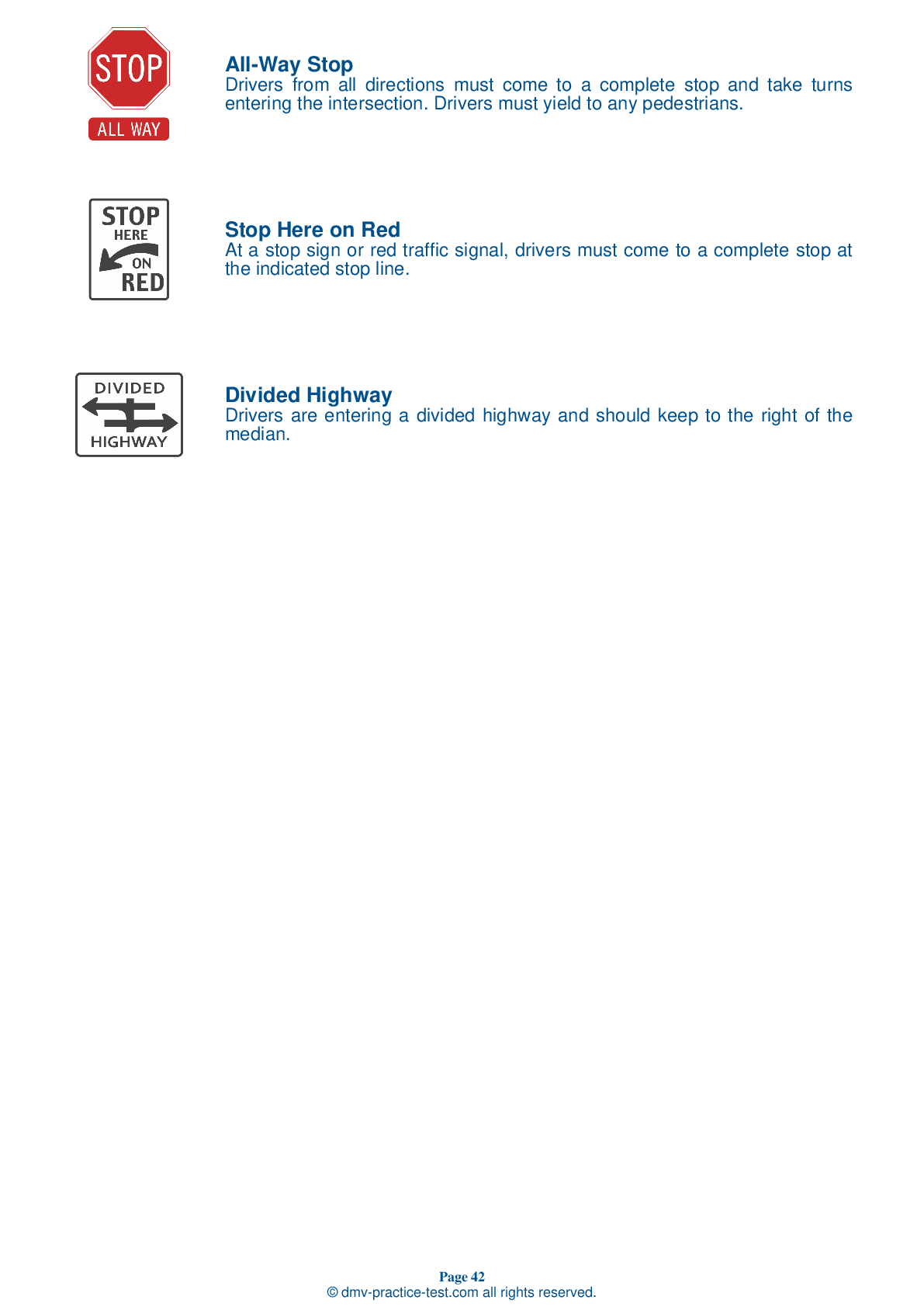FREE Indiana DMV Practice Test #18 Page 2 of 5
This set of Indiana DMV practise tests has been updated for January 2025. It includes questions based on the Indiana Driver Handbook's most significant traffic signals and laws for 2025. Use actual questions that are very similar (often identical!) to the DMV driving permit test and driver's licence exam to study for the DMV driving permit test and driver's licence exam.
On the practise exam, each question gets a tip and explanation to help you remember the concepts. The written component of the official Indiana DMV test will include questions about traffic rules, traffic signs, and driving statutes, as well as information from the Driver Handbook.
To obtain a passing grade, you must correctly answer 44 of the 50 questions. Take our DMV practise exam to help you prepare for your Indiana instruction permit or driver's licence.
The DMV exam is available in several languages.
Using any kind of testing assistance will result in an automatic fail, and the DMV may take additional action against your driver's licence, so stay away from it.
9 . This sign means:

Warning signs prepare drivers for upcoming road conditions and hazards and are usually yellow with black markings. This sign alerts drivers to an upcoming traffic signal. They should be prepared to respond to a yellow light, red light, and/or cross traffic.
10 . This sign means:
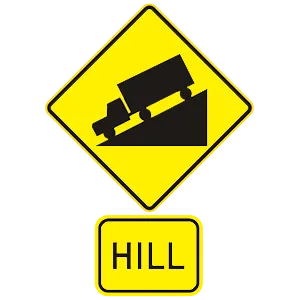
Warning signs are usually diamond-shaped with black markings on a yellow background. They alert drivers to upcoming hazards. This sign indicates that drivers are approaching a steep hill and should prepare to adjust their speeds to continue to drive safely.
11 . Which of the following is a safe way to drive through a curve?
You should slow down as you enter a curve and increase your speed gradually as you exit. Increasing your speed as you enter a curve will make it more difficult to control your vehicle.
12 . This sign means:
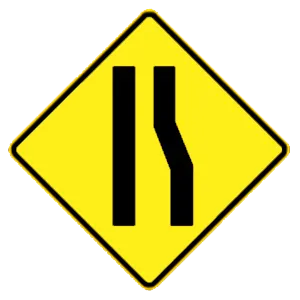
Warning signs are usually diamond-shaped with black markings on a yellow background. They alert drivers to upcoming hazards. This sign warns drivers that the right lane is ending or that the road is narrowing ahead.
13 . You may pass another vehicle:
You may not pass another vehicle on a hill or in a curve because you cannot see oncoming traffic and may cause a collision. Never pass another vehicle by driving onto the shoulder of a highway. Passing another vehicle by driving over a solid yellow line is prohibited.
14 . To drive safely at night, you should:
At night, visibility is reduced. Take steps to make driving in the dark more safe for you and the other drivers on the road.
15 . If a crossing guard is directing traffic in a school zone, you must:
Be prepared to reduce your speed and use caution when directed to do so by a sign, crossing guard, or law enforcement officer. Always drive with extra caution in a school zone.
16 . This road sign means:
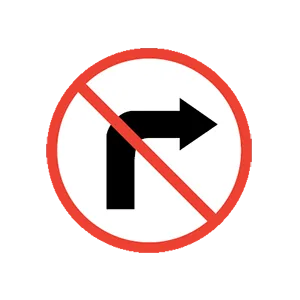
Regulatory signs display laws that drivers must always obey. Right turns are not permitted where this sign is present.
See the exact questions that will be on the 2025 Indiana DMV exam.
99.2% of people who use the cheat sheet pass the FIRST TIME
LT gives us an insight on how the cheat sheet provided her with all the study questions she needed before taking her test.
Joe initially studied with the handbook and failed his test, he eventually found us online, studied and pass his test the first time around.
